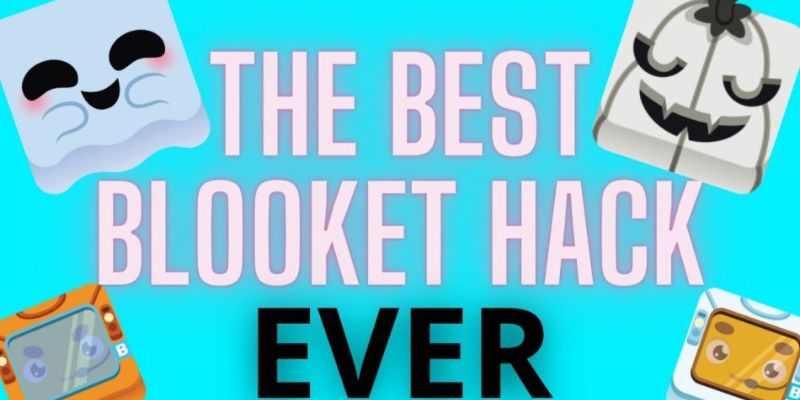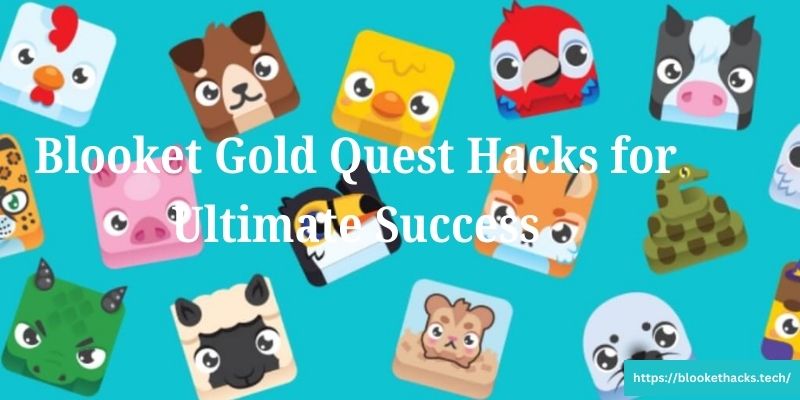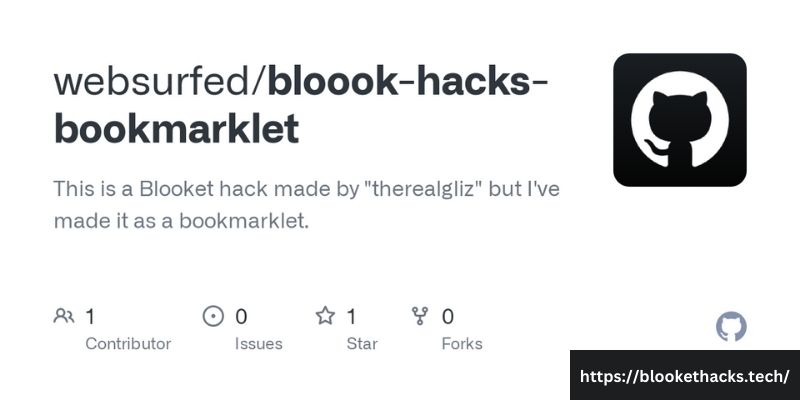Best Blooket Hacks to Maximize Your Learning Experience
Blooket has quickly become a popular educational tool, capturing both students and teachers with its engaging, game-based learning platform. Blooket was founded as a unique approach to making learning entertaining, combining the excitement of gaming with instructional information, making it a fantastic resource for classrooms throughout the world. Discover the best Blooket hacks to enhance your educational experience! Explore effective study techniques, game strategies, and advanced tips for both students and educators. Learn how to maintain fair play, ensure data privacy, and stay updated with the latest features.
The platform includes several game modes designed to accommodate diverse learning styles and classroom dynamics. Blooket emphasizes active learning and student participation through a variety of activities, including competitive quizzes, collaborative challenges, and individual practice sessions.
Despite its easy design, Blooket offers many possibilities for improving the learning experience. This article will discuss the tbest Blooket hacks and tactics for getting the most out of the platform. From content creation suggestions to advanced gameplay methods, we’ll examine how students and educators can maximize this dynamic teaching tool.
What is Blooket, and how does it work?
Blooket is an online educational platform that incorporates elements of gaming and learning. Designed to make teaching more entertaining, it enables teachers to create or select from a wide library of question sets that can be converted into a variety of interactive game formats. Students play these games on their smartphones, making the learning experience more dynamic and enjoyable.
Teachers may easily construct games on the platform, and students can join using a game code. The games’ real-time component keeps students interested and motivated, creating a competitive yet instructional environment.
Overview of the various game modes available in Blooket.
Blooket provides a range of game modes to accommodate various learning objectives and classroom settings:
- Classic mode:
- The typical quiz format is in which students answer questions for points. This mode is ideal for easy review sessions and examinations.
- Gold Quest:
- Players answer questions to gain gold, which they can then steal or trade with other players. This mode introduces elements of strategy and unpredictability.
- Battle Royal:
- Students play head-to-head in a knockout system, with the last person standing winning. This mode is ideal for developing a competitive attitude.
- Tower of Doom:
- It is a strategic game in which students answer questions to advance through levels while facing challenges and obstacles along the way.
- Café:
- Players run a virtual café by answering questions and serving guests. This mode mixes learning with a fun simulation component.
- Factory:
- Students answer questions to create things in a virtual factory. The faster they respond, the more they generate, which incorporates time management skills into the learning process.
- Racing:
- A race to the finish line in which accurate responses help players advance. This mode is perfect for doing rapid reviews and keeping pupils on track.
- Crypto Hack:
- Players can earn and steal cryptocurrency tokens by accurately answering questions. This mode teaches basic economic principles in a fun manner.
Benefits of Using Blooket in Educational Settings
Blooket provides various advantages that make it a useful tool for educational settings:
- Engagement:
- The game-based approach keeps pupils actively involved, making learning more interesting and less like a chore.
- Versatility:
- Blooket, with its different game modes and customizable question sets, is adaptable to a variety of subjects and learning objectives.
- Immediate Feedback:
- Students receive immediate feedback on their answers, allowing them to understand concepts better and rectify errors on the spot.
- Collaboration and Competition:
- Blooket promotes both collaboration and healthy competition, creating a dynamic classroom environment in which students may learn from one another.
- Motivation:
- The interactive aspect of the games, as well as the existing reward systems, encourage pupils to join and do their best.
- Assessment Tool:
- Blooket allows teachers to test student comprehension in a fun way, indicating areas where students excel or require further assistance.
- Blooket can assist educators in creating a more interactive and successful learning experience for kids, fostering a love of learning via play.
General Tips and Tricks
The Best Ways to Set Up Games for Different Classroom Sizes and Dynamics
Class Size Considerations:
- Small classes:
- Choose game styles that promote individual engagement and thorough feedback, such as Classic or Tower of Doom.
- Use this chance to provide more personalized attention and address specific student needs.
- Large Classes:
- Choose modes that encourage social activities while maintaining high engagement levels, such as Battle Royale or Gold Quest.
- Use features such as team mode to encourage collaboration and ensure that all students participate.
Classroom dynamics:
- Different Skill Levels:
- To accommodate all students and keep everyone motivated, mix easy and difficult questions.
- Use game modes that allow students to answer questions at their own pace, such as Café or Factory.
- Competitive Versus Cooperative Learning:
- Choose competitive modes such as Crypto Hack or Racing to create a lively, interesting environment.
- Use modes such as Gold Quest in team situations to promote collaboration and team spirit.
- Time Management:
- To keep students focused, keep sessions to a moderate length. Shorter, more frequent sessions may be more beneficial than longer, less frequent ones.
- Use timers and pacing parameters in Blooket to guarantee that the game runs smoothly and without dragging on.
How to create engaging and challenging question sets
- Relevance and variety:
- Ensure that the questions are related to the learning objectives and curriculum.
- Use a variety of question styles (e.g., multiple-choice, true/false, and fill-in-the-blank) to keep students interested and challenge different elements of their knowledge.
- Difficulty Levels:
- Include a variety of difficulty levels to accommodate pupils with different levels of knowledge.
- Use scaffolded questioning, beginning with easier questions to boost confidence and gradually progressing to more difficult ones.
- Interactive and Visual Elements:
- Use images, videos, and audio snippets to make inquiries more engaging and accessible to visual and auditory learners.
- Use situations and real-world examples to make inquiries more accessible and fascinating.
- Feedback and Explanations:
- Explain answers inside question sets to help students learn from their mistakes.
- Use immediate feedback to help students comprehend why an answer is correct or incorrect, so reinforcing their knowledge.
The Importance of Mixing Question Types to Address Different Learning Styles
- Different Learning Styles:
- Recognize that students have various learning styles: visual, auditory, reading/writing, and kinesthetic.
- To address these different learning styles, use a variety of question formats and multimedia features.
- Question Type Examples:
- Visual Learners:
- Use visuals, diagrams, and charts in questions to help visual learners understand concepts better.
- Auditory Learners:
- Integrate audio clips or video explanations to help students who learn best by listening.
- Students who are learning to read and write
- Include fill-in-the-blank and short-answer questions that challenge children to read and write, which will reinforce their learning process.
- Kinesthetic Learners:
- Use interactive components and game modes that require movement and hands-on interaction to engage kinesthetic learners.
- Balanced Approach:
- Ensure that each game contains a balanced mix of question types to keep all students engaged and catered to.
- Regularly update and rotate question kinds and styles to avoid boredom and keep the learning experience interesting and stimulating.
- Using these tips and techniques, educators may maximize their use of best Blooket hacks to create an engaging, inclusive, and successful learning environment that meets the requirements of all students.
Student Hacks
How to Use best Blooket hacks for Effective Review and Practice
- Scheduled review sessions:
- Schedule regular Blooket sessions to review class material. Consistent practice strengthens learning and increases retention.
- Use the “Homework” tool to create games that students can play at their speed outside of class hours.
- Focused Practice Sets:
- Create or choose question sets that focus on specific topics or places where you need extra practice. Concentrating on one thing at a time can help to strengthen understanding.
- Self-Assessment:
- Use Blooket’s self-paced game modes, such as Tower of Doom or Café, to test your grasp of a topic. Track your progress and find areas that require additional focus.
Tips to Make the Most of the Review and Practice Modes
- Review mode:
- Please make use of the Review mode to go over erroneous answers and determine why they were incorrect. Pay attention to the explanations provided for each answer to improve your learning.
- Practice Mode:
- Use Practice mode to run through question sets until you’re comfortable with the content. This option enables endless practice without the strain of a competitive game.
- Mixing Up Game Modes:
- To keep things interesting and avoid burnout, rotate through different game modes throughout practice sessions. Each mode provides a unique approach to interacting with the material.
Game Strategies
How to strategize in competitive modes to maximize points
- Understand the rules:
- Familiarise yourself with the rules and objectives for each game style. Knowing how to gain and maximize points is critical to success.
- Speed and accuracy:
- Balance speed and precision. Answer questions fast to earn more points, but avoid rushing and making sloppy mistakes, which might cost you points.
- Strategic Power-ups:
- Use power-ups and bonuses strategically. In games such as Gold Quest and Crypto Hack, timing your power-ups can significantly improve your score.
- Observe opponents:
- Keep track of your opponents’ scores and strategy in games where you compete directly against other players, such as Battle Royale. To stay ahead, adjust your approach accordingly.
Top Tips for Time Management During Games
- Prioritise questions.
- Focus on answering easier questions first to earn quick points, then progress to more difficult problems.
- Pacing:
- Keep a close eye on the timer and pace yourself. Allocate time appropriately according to the difficulty of the questions.
- Stay Calm:
- Maintain your composure in stressful situations. Panicking might result in mistakes and wasted time. Taking several breaths, approach each question methodically.
Customization
I am using avatars and themes to stay motivated and engaged.
- Personalization:
- Customize your avatar to show your personality. This little act of personalization might make the game more engaging and relatable.
- Themes:
- Select themes that you find appealing or inspirational. A visually appealing game environment might increase your motivation and attentiveness.
- Rewards and goals:
- Set personal goals and reward yourself when you achieve them. For example, once you hit particular academic or gaming milestones, you can unlock new avatars or themes.
- Friendly competitions:
- Organise pleasant tournaments between classmates. Healthy competition can improve motivation and make studying more enjoyable.
- Students may make the most of their Blooket learning experience by utilising various study approaches, gaming strategies, and customisation options, making revision and practice entertaining and effective.
Best Blooket Hacks

Code and Scripts
Overview of Safe and Ethical Use of Scripts to Improve Gameplay
Understanding the role of scripts:
Scripts in Blooket can automate processes, introduce new features, and improve the overall user experience. However, their use should always be ethical and consistent with the platform’s norms.
Ethical considerations:
Use scripts for educational purposes, not to obtain an unfair edge in games. Avoid utilizing scripts that modify scores or provide unfair advantages in competitive environments.
Always obtain authorization from educators or administrators before installing any scripts in an educational setting.
How to Find and Implement Reliable Scripts for Educational Use
Finding Reliable Scripts:
Look for scripts in renowned coding communities like GitHub and Stack Overflow. Ensure that the scripts have positive evaluations and are maintained by trustworthy developers.
Join Blooket-related forums and groups to gain advice from other instructors and users who have successfully used scripts.
Implementing scripts:
- Step 1: Reviewing and Testing:
- To understand how the script works, thoroughly review its code. Test the script in a controlled environment to confirm it works as planned and does not interfere with gameplay.
- Step 2: Use Browser Extensions.
- Install browser extensions such as Tampermonkey, which lets you manage and run user scripts. This utility makes it easier to apply scripts safely and efficiently.
- Step 3: Script Integration.
- Follow the author’s instructions to integrate the script into Blooket. Typically, this entails inserting the script into the Tampermonkey dashboard and activating it.
Third-party tools.
Recommendations for Third-Party Tools to Supplement Blooket
Quizlet:
Create complex flashcards and study sets with Quizlet, which can then be imported into Blooket for interactive games.
Quizlet’s huge library of user-generated content can save you time while providing high-quality instructional material.
Kahoot!:
Similar to Blooket, Kahoot! Provides game-based learning. Use it alongside Blooket to broaden the range of games and quizzes available to pupils.
The variety of game platforms can help students stay engaged and provide varied viewpoints on the same content.
Google Forms:
Using Google Forms, create surveys, quizzes, and formative evaluations. Import data into Blooket to convert responses into interactive games.
This application can be used to collect student comments and track their learning before incorporating the information into Blooket for additional practice.
Edpuzzle:
Use Edpuzzle to integrate video lessons with interactive questions. Add these movies to Blooket question sets to mix visual learning with interactive quizzes.
Edpuzzle’s statistics can be used to tailor Blooket games depending on student performance and engagement with video content.
Examples of Integrating These Tools into the Blooket Experience
Quizlet Integration:
To import Quizlet sets into Blooket, use the “Import” functionality. This allows pupils to benefit from sophisticated study materials in a fun, game-like setting.
Kahoot! And Blooket Combination:
Alternate between Kahoot! Blooket sessions to sustain high levels of engagement. Use Kahoot! for preliminary reviews and Blooket for more in-depth practice sessions.
Google Form Data:
After administering a survey or quiz using Google Forms, analyze the results to find knowledge gaps. Using this knowledge, design targeted question sets in Blooket that fill these gaps.
Edpuzzle Enhances Learning:
Integrate Edpuzzle video lessons into Blooket by linking video content to questions. This strategy reinforces learning using multimedia while retaining the participatory character of Blooket games.
By adopting these advanced hacks, students and educators can improve their Blooket experience, making it more efficient, interesting, and personalized to individual requirements.
Safety and Ethics
Fair Play.
The importance of maintaining fairness in games.
Educational Integrity:
Fair play guarantees that Blooket’s instructional value is preserved. The major purpose of Blooket is to encourage learning, and fairness contributes to the integrity of the educational process.
Equal Opportunity:
Maintaining fairness in games guarantees that every student has an equal chance to achieve. This results in a good and inclusive learning atmosphere in which all students feel appreciated and driven.
Promoting healthy competition:
Fair play promotes healthy rivalry among children. It motivates students to set personal goals and learn from their mistakes rather than depend on unfair advantages.
Consequences of unethical behavior, such as cheating
Loss of Trust:
Cheating weakens the trust between students and teachers. It can erode the teacher-student relationship and foster a culture of distrust and mistrust.
Academic consequences:
Schools frequently have severe policies against cheating. Students who are detected cheating may incur academic penalties such as failing an assignment or course, as well as disciplinary action.
Impact on Learning:
Cheating denies pupils meaningful learning opportunities. It inhibits students from fully comprehending the subject and developing the skills required for future success.
Privacy Concerns
Ensuring Student Data Privacy with Blooket.
Data Protection Policy:
Read Blooket’s privacy policies to learn about how student data is collected, utilized, and safeguarded. Ensure that Blooket complies with applicable data protection standards, such as the Family Educational Rights and Privacy Act (FERPA) in the United States.
Minimal Data Collection:
Collect only the data needed for instructional reasons. Avoid utilizing personal identifiers unless essential. Please encourage students to adopt usernames or pseudonyms rather than their real identities.
Parental consent:
Before utilising Blooket with younger students, obtain parental approval. Inform parents about the platform’s privacy policies and how their children’s data will be used.
Best Practices for Safe Online Interaction in Educational Games
Monitor Student Activities:
Regularly watch student interactions at Blooket to ensure that they are acceptable and respectful. Respond quickly to any instances of bullying or inappropriate behavior.
Teach digital citizenship.
Teach pupils about responsible internet behavior. Stress the value of respect, kindness, and honesty in all online interactions.
Secure access:
To keep game sessions secure, use strong passwords and access controls. Share game codes solely with intended participants and avoid making them public.
Review the Privacy Settings:
Examine and adjust best Blooket hacks privacy settings regularly to ensure they provide the necessary level of protection. Limit access to game sessions and data to only authorized users.
Data Anonymisation:
When feasible, anonymize student data to safeguard their identity. Instead of individual student information, analyze and report on aggregate statistics of best Blooket hacks.
By following these safety and ethics rules, educators may foster a fair, respectful, and secure environment on Blooket. This not only improves the learning experience but also ensures that students establish excellent digital citizenship behaviors that will help them outside of the classroom.
Conclusion
Summary of the Key Points Discussed
In this essay, we looked at several aspects of using Blooket to improve educational experiences, with an emphasis on best Blooket hacks and methods for both students and teachers. We began with an overview of Blooket, noting its popularity and usefulness in educational contexts. We then looked into the following:
Understanding Blooket:
Overview of Blooket’s functionality, available game types, and educational benefits.
General Tips and Tricks:
The best ways to set up games for varied classroom sizes and dynamics, how to create entertaining and challenging question sets, and the value of varying question kinds to accommodate different learning styles.
Student hacks:
Study tactics for successful revision and practice, gaming strategies for maximizing points, and customization options to keep you motivated and interested.
Advanced hacks:
Use scripts safely and ethically, locate and deploy dependable scripts for educational purposes, and recommend third-party tools that complement Blooket.
Safety and ethics:
The importance of preserving game fairness, the implications of unethical behaviour such as cheating, protecting student data privacy, and best practices for safe online interactions.
Encouragement to explore and experiment with the mentioned hacks.
We encourage educators and students to try out the numerous techniques and strategies presented in this post. By experimenting with different ways, you can discover what works best for your own learning or teaching style. Feel free to innovate and tailor the suggestions to your specific needs. Blooket’s adaptability enables a diverse range of unique and engaging educational activities.
Final Thoughts on Best Blooket Hacks Potential to Improve Educational Experiences
Blooket offers enormous potential for transforming the traditional classroom setting into an interactive and dynamic learning space. Its game-based approach not only makes learning more enjoyable but also promotes active engagement and knowledge retention. By exploring the best Blooket hacks, users can unlock a world of possibilities, optimizing their gameplay, enhancing their learning experiences, and achieving unbeatable success. Using the strategies, tools, and resources provided in this article, educators can improve their teaching methods, and students can optimize their learning experiences.
Finally, best Blooket hacks is an effective instrument in modern educational technology. Its capacity to blend fun and teaching makes it an invaluable tool for instilling a love of learning in pupils. Accept the possibilities that Blooket provides and enter a world of fascinating and productive educational experiences.
Also Read












